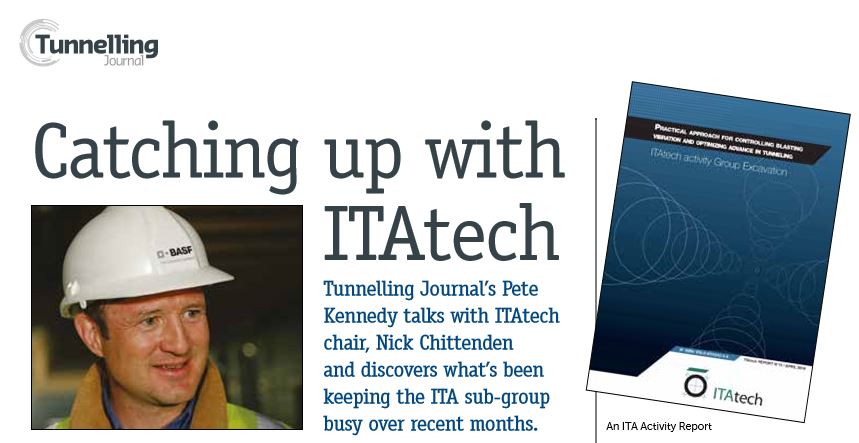Tunnelling Journal’s Pete
Kennedy talks with ITAtech
chair, Nick Chittenden
and discovers what’s been
keeping the ITA sub-group
busy over recent months.

What’s worked in the past has… well, worked in the past. Why change now?
That’s a great question, according to Nick Chittenden, chair of ITAtech, a subgroup of the International Tunnelling Association. “There are better ways to do things,” he says. Clients, such as town planners, could save a fortune on time and materials if they tried different approaches, in particular utilising new technologies.
Yet Nick Chittenden also realises there is a great deal of incentive to maintain the status quo. “By default, consultants and designers want to essentially cut and paste,” he comments. “Within the ITA, most of the working groups are made up of consultants. They tend to be conservative.” Sometimes it’s to avoid risk. Other times it’s likely a matter of comfort.
Regardless, the “why change?” approach prevents clients from getting all they can out of a project. And Chittenden and others at ITAtech are out to change that.
Their key initiative is publishing a series of best practice guidelines to give tunnelling decision-makers the technical knowledge and background they need to modernise the industry’s thinking.
From the start
The first guidelines were issued in 2013. There are now 12, with two more ready for publication in the immediate future
“We are starting to create a library of sorts that we hope will make an impact on the industry,” Chittenden says.
Collaboration across the industry is essential for ITAtech – as are suppliers, because they are often the drivers of change. “To bring something innovative to the party, you generally rely on the suppliers,” he says, “They tend to create something new.”
He offers wet-mix sprayed concrete as such an example, “The development of wet-mix concrete was 100 per cent driven by the suppliers.” Yet “new” is sometimes frowned upon by industry professionals. There tends to be little incentive to try a new approach, and many times those designing or consulting don’t fully understand how to improve a particular process.
ITAtech’s guidelines were created to counter such mindsets. “We want people to go and use these guidelines,” Chittenden adds. “If you are a town planner who is looking at creating more underground space, and you’re not sure of the technical details, then you might want to look at ITAtech.
We are developing best practices and guidelines to enable those clients to make the right decisions.” For example, some planners might fear they cannot tunnel through the rock beneath a historical structure due to vibration from the drill and blast process.
Yet that course of action can be done safely if the correct procedures are followed. “You can do it properly if you adopt the latest technology,” Chittenden says. ITAtech has also published guidelines for TBM rebuilds. “Clients might buy a TBM because they know they have several different projects to complete,” he says. “But they would have to rebuild the TBM every time.
What constitutes a rebuild? What is the process, and how do you know the rebuilt TBM is safe?
You don’t
just throw something together
and call it a rebuilt machine. The
guidelines explain that.”
TBMs are good examples of
how a specific topic can be
explored on both the machine and
material sides of the process. “It’s
not just TBM technology, but also
fibres for segments and sprayapplied waterproofing,” he says.
“We have guidelines on those as
well.”
Future publications are likely to
tie in sustainability, which presents
itself in a number of ways on
tunnelling projects.
Article source: Tunnelling Journal

